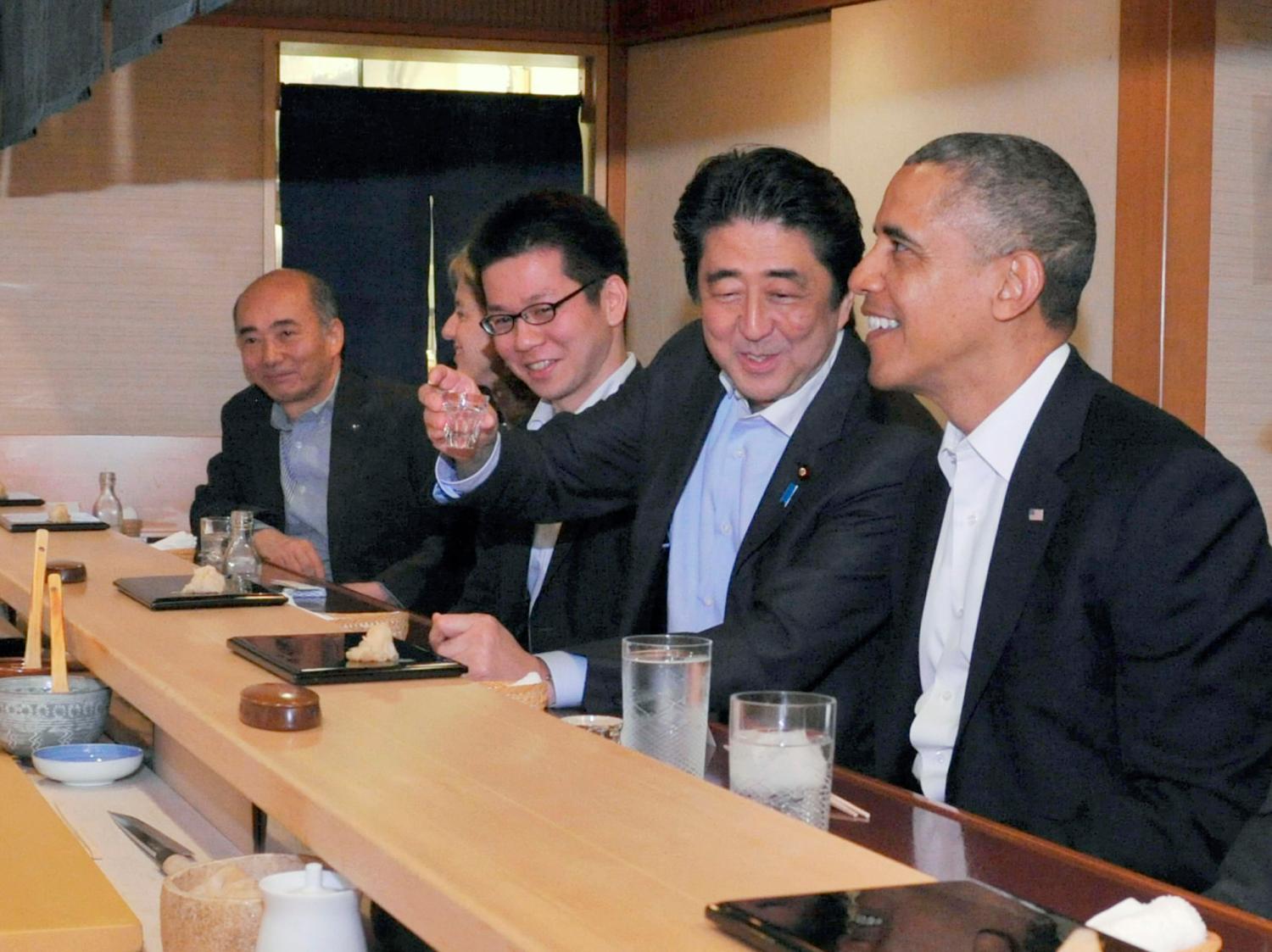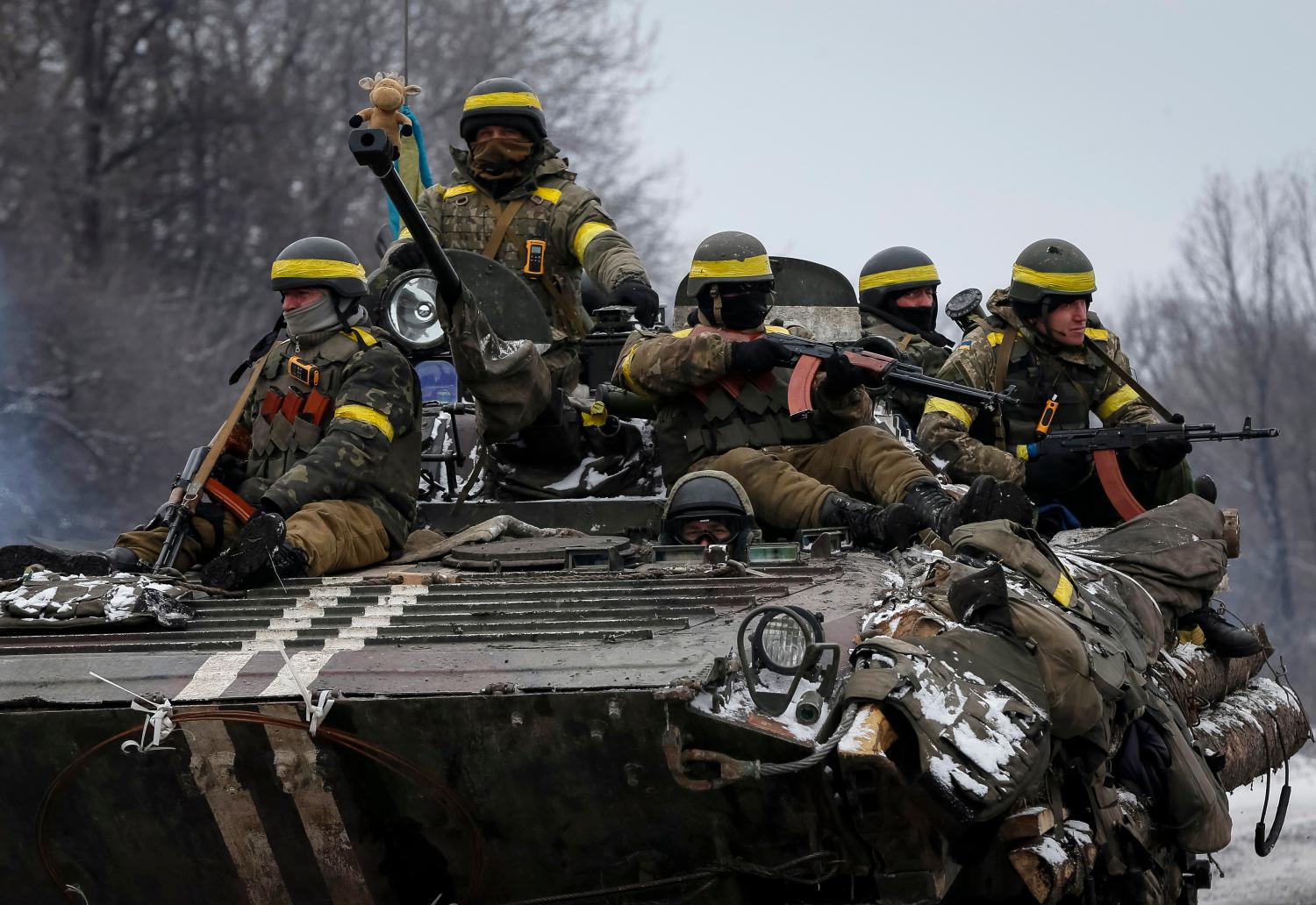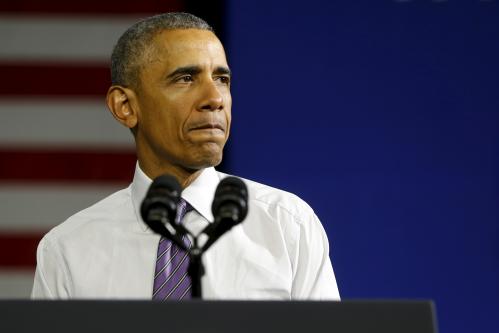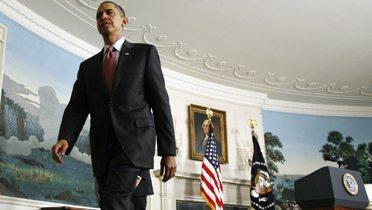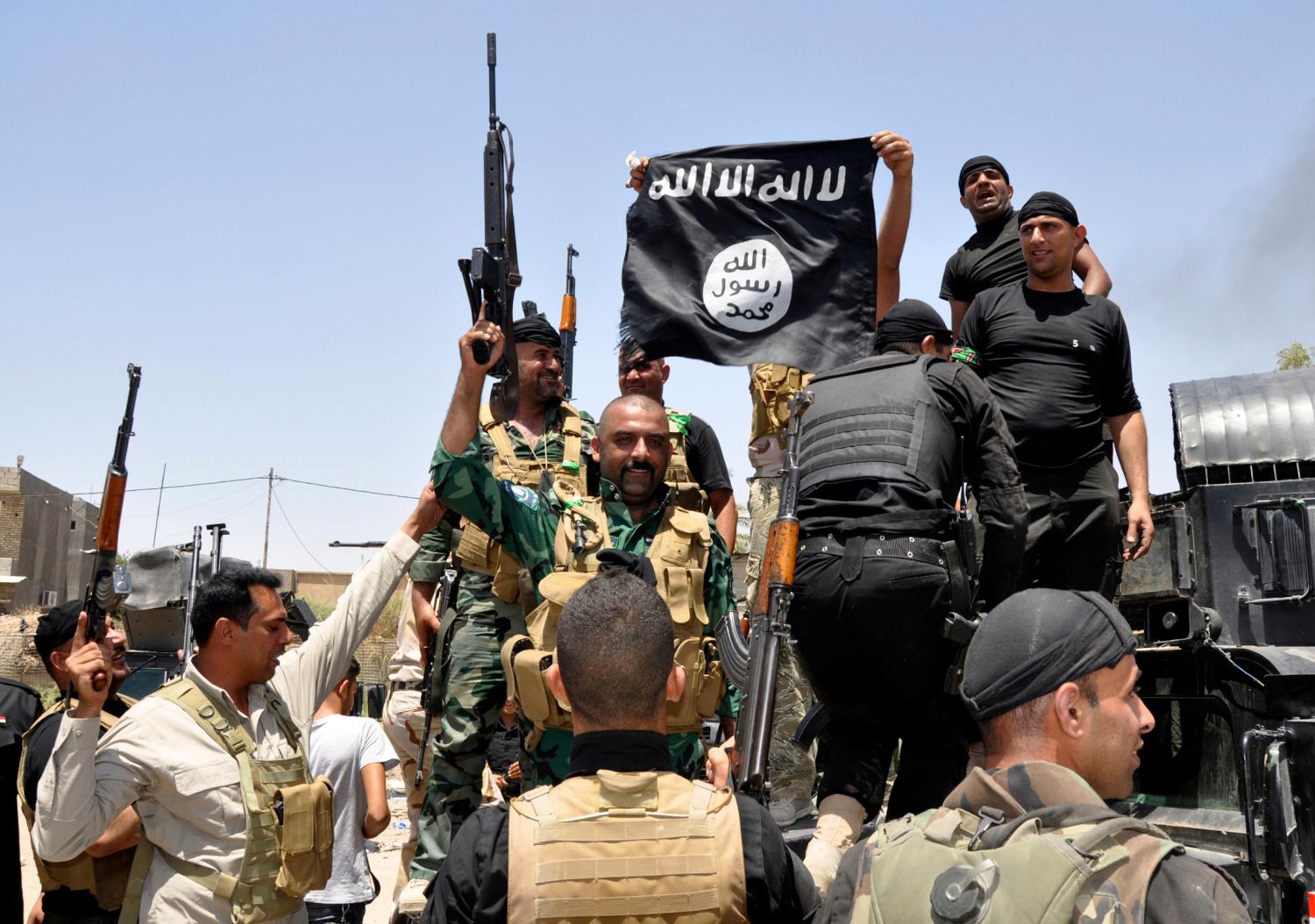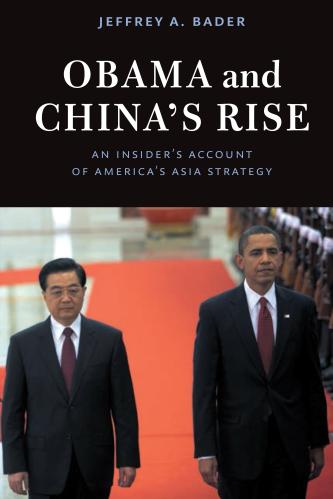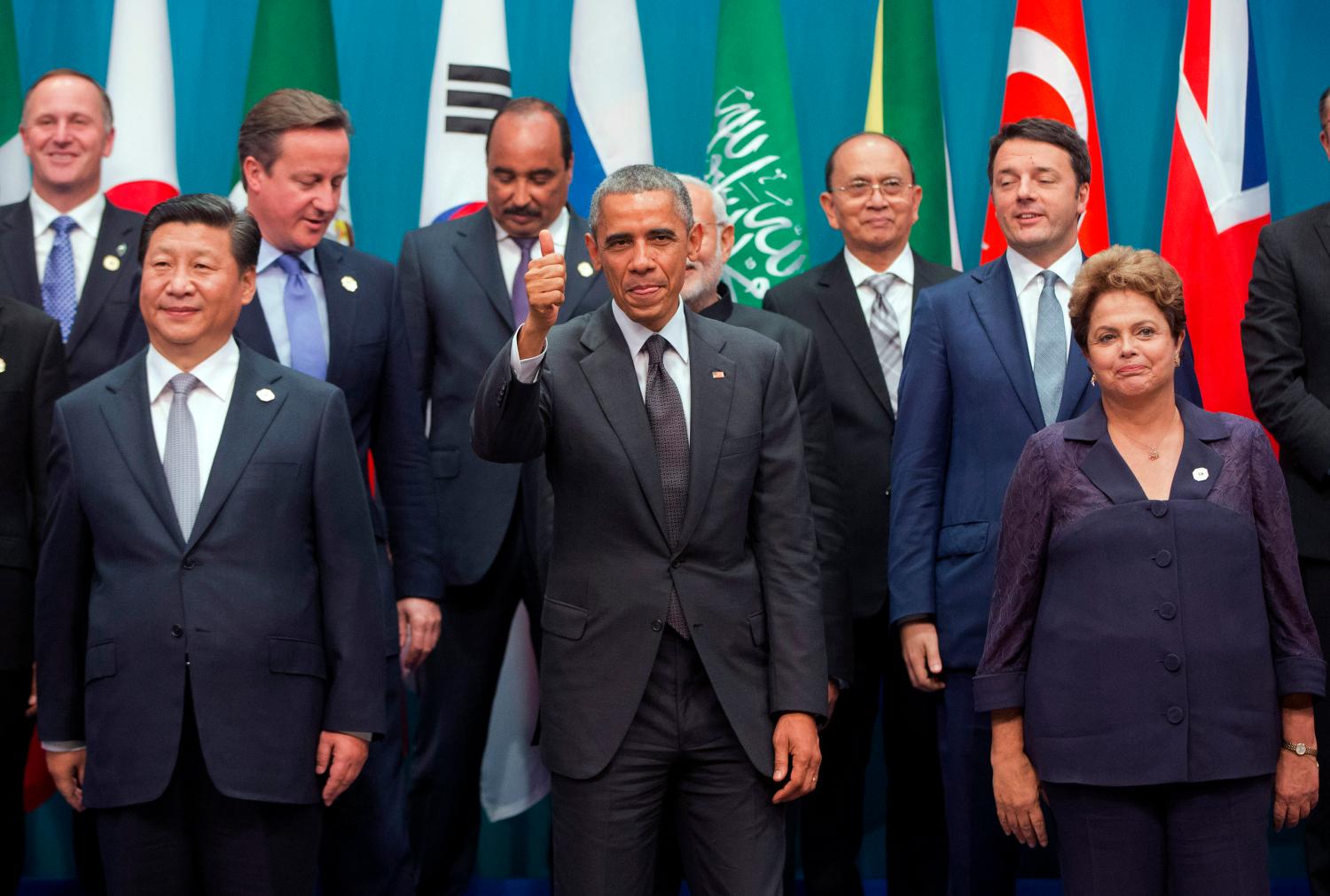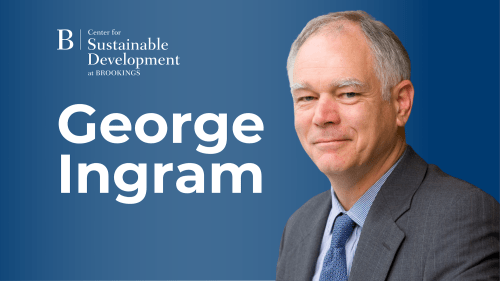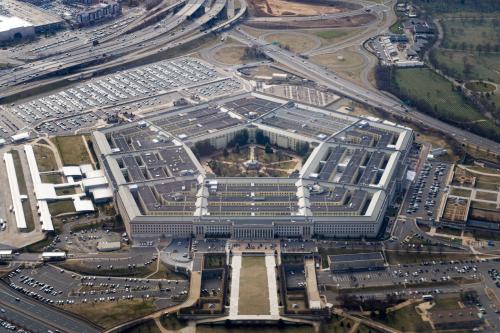By the standards he has set out for himself, President Barack Obama’s foreign policy has fallen considerably short of expectations and aspirations. By the standards of his critics, of course, the performance has been even worse—with the American commander-in-chief now accused of fecklessness and irresoluteness as global crises multiply on his watch. Even two of his former secretaries of defense have written fairly harsh verdicts on what they saw while serving in his administration.
Gauged by more reasonable and normal standards, however, Mr. Obama has in fact done acceptably well. Both his critics and his defenders tend to use unrealistic benchmarks in grading his presidency. If we use the kinds of standards that are applied to most American leaders, things look quite different.
 I do not mean to overstate. Obama’s presidency will not go down as a hugely positive watershed period in American foreign policy. He ran for election in 2007 and 2008 promising to mend the West’s breach with the Islamic world, repair the nation’s image abroad, reset relations with Russia, move toward a world free of nuclear weapons, avoid “stupid wars” while winning the “right war,” combat climate change, and do all of this with a post-partisan style of leadership that brought Americans themselves together in the process.1 He ran for reelection in 2012 with the additional pledges of ending the nation’s wars and completing the decimation of al Qaeda. Six years into his presidency, almost none of these lofty aspirations has been achieved.2 There has not been, and likely will not be, any durable Obama doctrine of particular positive note. The recent progress toward a nuclear deal with Iran, while preferable to any alternative if it actually happens, is probably too limited in duration and overall effect to count as a historic breakthrough (even if Obama shares a second Nobel Prize as a result).
I do not mean to overstate. Obama’s presidency will not go down as a hugely positive watershed period in American foreign policy. He ran for election in 2007 and 2008 promising to mend the West’s breach with the Islamic world, repair the nation’s image abroad, reset relations with Russia, move toward a world free of nuclear weapons, avoid “stupid wars” while winning the “right war,” combat climate change, and do all of this with a post-partisan style of leadership that brought Americans themselves together in the process.1 He ran for reelection in 2012 with the additional pledges of ending the nation’s wars and completing the decimation of al Qaeda. Six years into his presidency, almost none of these lofty aspirations has been achieved.2 There has not been, and likely will not be, any durable Obama doctrine of particular positive note. The recent progress toward a nuclear deal with Iran, while preferable to any alternative if it actually happens, is probably too limited in duration and overall effect to count as a historic breakthrough (even if Obama shares a second Nobel Prize as a result).
But the harsh verdict of many of the president’s critics as well as his supporters goes too far. Most of today’s problems were not Obama’s creations. Others were mishandled, but generally in ways that could have been far worse. He also managed to avoid a second great recession.3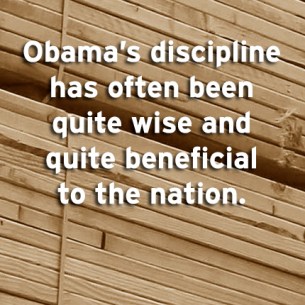 Most of all, Obama has been judicious on most key crises of the day. His caution and care have been notable—and underrated. He has sometimes taken the notion of strategic restraint too far, as with a premature U.S. military departure from Iraq, excessive nervousness about any entanglement in Syria’s civil war, and ongoing plans for a complete military withdrawal from Afghanistan next year. But Obama’s discipline has often been quite wise and quite beneficial to the nation, especially in regard to Russia, China, and Iran. As his presidency begins to wind down, the country’s fundamentals of national power as measured by economic growth, high-technology, industrial entrepreneurship and productivity, fiscal and trade deficits, and military power are generally no worse and in some cases modestly better than when he entered the White House.
Most of all, Obama has been judicious on most key crises of the day. His caution and care have been notable—and underrated. He has sometimes taken the notion of strategic restraint too far, as with a premature U.S. military departure from Iraq, excessive nervousness about any entanglement in Syria’s civil war, and ongoing plans for a complete military withdrawal from Afghanistan next year. But Obama’s discipline has often been quite wise and quite beneficial to the nation, especially in regard to Russia, China, and Iran. As his presidency begins to wind down, the country’s fundamentals of national power as measured by economic growth, high-technology, industrial entrepreneurship and productivity, fiscal and trade deficits, and military power are generally no worse and in some cases modestly better than when he entered the White House.
A more thorough assessment of Obama’s foreign policy legacy requires an issue-by-issue examination of the most important foreign policy matters of the day, a task to which I turn below.
Obama’s no-drama strategy
The lofty goals have proved elusive. Barack Obama may not be able to heal the planet, rid the Earth of nuclear weapons, or stop the oceans’ rise as his signature legacies.
 But, in fact, there is a strategy, even if it is often implied more than accurately stated, and even if it falls short of the president’s own preferences of what writers and historians might say about his two terms in office. It is more mundane but nonetheless important. Obama is attempting to be strategic in the most literal and relevant senses of the word—defining priorities and holding to them, even when that makes him appear indifferent or indecisive in response to certain types of crises or challenges. Yet he has shown himself willing to employ significant amounts of force when persuaded that there is no alternative. Often, he has made mistakes along the way—not least in his non-intervention in Syria, his premature departure from Iraq, his plans to pull entirely out of Afghanistan, and his failure to help piece Libya back together after the 2011 NATO-catalyzed conflict that overthrew Moammar Gadhafi. But the basic effort to be patient and careful in the employment of American national power, especially military power, has been quite reasonable.
But, in fact, there is a strategy, even if it is often implied more than accurately stated, and even if it falls short of the president’s own preferences of what writers and historians might say about his two terms in office. It is more mundane but nonetheless important. Obama is attempting to be strategic in the most literal and relevant senses of the word—defining priorities and holding to them, even when that makes him appear indifferent or indecisive in response to certain types of crises or challenges. Yet he has shown himself willing to employ significant amounts of force when persuaded that there is no alternative. Often, he has made mistakes along the way—not least in his non-intervention in Syria, his premature departure from Iraq, his plans to pull entirely out of Afghanistan, and his failure to help piece Libya back together after the 2011 NATO-catalyzed conflict that overthrew Moammar Gadhafi. But the basic effort to be patient and careful in the employment of American national power, especially military power, has been quite reasonable.
Consider especially the big issues, where by my count he is doing reasonably well on three of the top four:
The Asia-Pacific rebalance
 The so-called pivot or rebalance to the Asia-Pacific, a centerpiece of President Obama’s first-term foreign policy in particular, has been generally very sound. Indeed, it enjoys a remarkable degree of bipartisan support. Obama’s theory of the case here is that a reaffirmation of America’s enduring commitment to Asia is strategically wise—especially in light of China’s rise, but also considering India’s dynamism, other countries’ economic progress, and North Korea’s dangerous ways. The fact that it is a long-term, patient policy designed to shape a key region rather than respond to a specific crisis means it often fails to make headlines. But that fact does not lessen its importance.4
The so-called pivot or rebalance to the Asia-Pacific, a centerpiece of President Obama’s first-term foreign policy in particular, has been generally very sound. Indeed, it enjoys a remarkable degree of bipartisan support. Obama’s theory of the case here is that a reaffirmation of America’s enduring commitment to Asia is strategically wise—especially in light of China’s rise, but also considering India’s dynamism, other countries’ economic progress, and North Korea’s dangerous ways. The fact that it is a long-term, patient policy designed to shape a key region rather than respond to a specific crisis means it often fails to make headlines. But that fact does not lessen its importance.4
There is a “Where’s the beef?” question associated with the rebalance. It is modest in most of its characteristics. Thus, it does not deserve the other name occasionally given to it—the pivot. The military centerpiece of the rebalance is a plan for the U.S. Navy to devote 60 percent of its fleet to the broader region by 2020, rather than the historic norm of 50 percent. But that is 60 percent of what is now a smaller Navy than before. So the overall net increase in capacity for the region is quite modest (indeed, some of those ships may wind up deploying to the Persian Gulf rather than to the Asia-Pacific). The economic centerpiece of the rebalance, the Trans-Pacific Partnership trade deal, is now being actively pursued by the Obama administration—but it may or may not prove achievable at home or abroad.
That said, the rebalance is a smart way to reassert U.S. interests in the region, reassure allies, recognize the importance of new players like India, and remind China and North Korea that Washington is paying attention to what is happening there. It is a signal of commitment without going so far as to be needlessly provocative. It provides a welcome antidote at least rhetorically and diplomatically to what had been a sustained American obsession with the Middle East for the previous decade. And while some of his cabinet secretaries may have lost a bit of focus on the region, Obama himself got there twice in 2014 and conducted a good summit with Chinese President Xi Jinping in Beijing in November of that year. China’s ongoing assertiveness, particularly in the South China Sea, is concerning. But it does not threaten vital U.S. interests severely enough to warrant a forceful American military response; Obama’s approach of monitoring, working calmly with regional allies, and making Beijing know there could be some proportionate price to pay for excessive pushiness strikes the right balance.
Russia and Ukraine
In 2014, Russia invaded and annexed Crimea. It then stoked and aided an insurgency in eastern Ukraine by pro-Russia separatists that continues to this day. Putin’s goals are unclear. Is he trying to chop away gradually at Ukraine’s territory, challenge and embarrass NATO, ensure that Ukraine never joins NATO by creating a “frozen conflict” that he can always rekindle, or simply improvise in some silly game of geopolitics more evocative of the 19th century than the 21st?
 Regardless, it’s hard to blame Obama for this behavior, any more than one should blame George Bush for Putin’s attack on Georgia in 2008. Neither Georgia nor Ukraine is part of the NATO alliance, whose members the United States is sworn to defend. So the failure to deter the conflict is hard to lay at Obama’s doorstep. Obama’s approach to handling the Ukraine crisis—make Putin pay an economic price for what he has done, while signaling that the United States and its allies can increase the economic costs further if need be—strikes a good balance between indifference and risky escalation over a less-than-crucial national security matter.
Regardless, it’s hard to blame Obama for this behavior, any more than one should blame George Bush for Putin’s attack on Georgia in 2008. Neither Georgia nor Ukraine is part of the NATO alliance, whose members the United States is sworn to defend. So the failure to deter the conflict is hard to lay at Obama’s doorstep. Obama’s approach to handling the Ukraine crisis—make Putin pay an economic price for what he has done, while signaling that the United States and its allies can increase the economic costs further if need be—strikes a good balance between indifference and risky escalation over a less-than-crucial national security matter.
Obama has resisted arming Ukraine to date, recognizing that Russia enjoys escalation dominance in the region. Thus, any American move could simply elicit a greater and stronger Russian counterplay. Obama is under increasing bipartisan pressure to do more as of this writing in the spring of 2015, and if the latest ceasefire collapses, odds seem fairly high that he may rethink his current approach. But so far, the strategy has had a solid logic.
Obama’s theory of the case has been to keep the crisis in perspective, work closely with European allies, employ significant but non-military instruments of national power in response to Russia’s aggressions, and provide off-ramps for Putin at every turn. This strategy is reasonable, even if it lacks a clear endgame, and even if it remains a work in progress.
Iran
On Iran, President Obama has sought to use various “smart sanctions” and patient diplomacy to induce Tehran to agree to a deal on its nuclear programs. As of Spring 2015, he appears to have a good chance of success. Obama’s theory of the case here also begins with an appreciation of the power of economic tools of statecraft, together with an awareness of the pitfalls of the use of military force to prevent the Islamic Republic from gaining a nuclear weapon.
The Iran effort represents the culmination of a decade of applying the economic screws against Tehran—first by George Bush and then by Barack Obama—through a creative international sanctions campaign. The approach has involved traditional measures applied via U.S. law or U.N. Security Council resolution, as well as new and “smarter” sanctions against certain individuals within Iran or certain special sectors of the economy.5
Obama has made two key mistakes on Iran. First, he failed to give the Bush administration and Republicans in general, enough credit for the overall approach. His predecessor was the one who first opted for trying to use economic rather than military power to address Iran’s nuclear aspirations, and if the Obama administration had framed the talks as a bipartisan accomplishment, domestic support for this policy might have increased.
Second, Obama did not try hard enough to make the deal of indefinite duration. He should have tried to keep the world’s other powers aboard an approach that would make all key elements of the nuclear deal of much longer duration as a condition for comprehensive sanctions relief. That might not have worked, but should have been attempted. So the prospective nuclear deal will be only a marginal accomplishment, if it sticks, but still will be preferable to the use of force or to the continued course of gradual nuclear buildup that Iran had previously been on.
ISIL and the broader Middle East beyond Iran
In regard to the rest of the Middle East beyond Iran, unfortunately, Obama’s disciplined approach has often failed him, and his critics have a stronger case. Luckily, he has begun to make amends in regard to Iraq, and one hopes that there will be further headway in his remaining year and a half in office.
On Iraq, at least, Obama has had a relatively good last year. U.S. and coalition airstrikes have limited ISIL’s progress. Washington has successfully coaxed Iraqis to replace Prime Minister Nouri al-Maliki with a new leader, Prime Minister Haider al-Abadi. Obama has overcome his allergy to Iraq and redeployed nearly 3,000 American military personnel to help rebuild and retrain the Iraqi army as it prepares a general counteroffensive.
 But the ascendance of ISIL was partly a result of America’s complete military departure from Iraq in 2011—a decision that was largely Obama’s choosing, even if the Iraqis also had an important hand in the outcome.6 That exit deprived Washington of leverage over Maliki as he pursued an increasingly sectarian agenda. It further deprived the United States of intelligence on the state of Iraq’s military and on the preparations ISIL was making in 2013 and early 2014 to mount an attack in the country’s Sunni heartland. Moreover, for all the progress since June of 2014, the prognosis for Iraq is uncertain. ISIL’s days in control there are probably numbered, but the process of driving it out may rely so heavily on Iranian-sponsored Shia militias that the seeds will be planted for future worsening sectarian conflict.
But the ascendance of ISIL was partly a result of America’s complete military departure from Iraq in 2011—a decision that was largely Obama’s choosing, even if the Iraqis also had an important hand in the outcome.6 That exit deprived Washington of leverage over Maliki as he pursued an increasingly sectarian agenda. It further deprived the United States of intelligence on the state of Iraq’s military and on the preparations ISIL was making in 2013 and early 2014 to mount an attack in the country’s Sunni heartland. Moreover, for all the progress since June of 2014, the prognosis for Iraq is uncertain. ISIL’s days in control there are probably numbered, but the process of driving it out may rely so heavily on Iranian-sponsored Shia militias that the seeds will be planted for future worsening sectarian conflict.
As troubling as the situation is in Iraq, it is far worse in Syria. There, the theory of the case has failed utterly. The hands-off approach Obama chose in 2011–12, when he opted not to provide any significant military help to the opposition, has clearly fallen short. Contrary to initial expectations, Bashar al-Assad is still in power, with firm backing from Moscow, Tehran, and Lebanese Hezbollah—and Russia has shown no serious interest in helping push Assad out of office through its influence with Damascus. More than 200,000 Syrians are dead and an astronomical 12 million displaced from their homes. ISIL has become the strongest element of the anti-Assad movement. Moderate factions are largely displaced, fractured, or decimated. Or they have joined with the al-Nusra Front, an al Qaeda affiliate, out of the simple desire to survive on the battlefield (ensuring that they will not receive U.S. weapons and thereby further continuing the downward spiral).
The United States needs a serious, sustained program to strengthen the moderate factions of the Syrian insurgency. It needs to get off the fence on providing arms to groups that may have some shady members and questionable connections because, this far into the war, there are few saints left in Syria. No-fly zones and limited numbers of U.S. special forces on the ground in certain relatively safe parts of the country may prove necessary as well, in what could be viewed as an “ink spot” strategy designed to defeat ISIL while limiting Assad’s control in many other parts of the country. But Obama seems to have little appetite for this or any other new approach.
 Libya has been a major disappointment, as Obama himself has conceded, even if the stakes there are much lower. The real issue in regard to Libya is not Benghazi. Four Americans were tragically killed there, and it was no one’s finest hour. But charges that the Obama administration launched a major conspiracy to cover up what had really happened simply fail to hold water. Beyond the human tragedy, the strategic consequences for the United States of that terrible night in Libya in September of 2012 were modest. The real problem, rather, is not Benghazi but the anarchy that resulted from Gadhafi’s overthrow. The country is now in chaos; there is no effective central government; ISIL and affiliates are gaining influence and control. The United States and allies need to deal with this through a much more muscular NATO effort to train and equip new Libyan security forces—though that task is now harder than it would have been in 2011 or 2012. A similar morass now confronts the United States and international community in Yemen, even if the path to that crisis has been different, and less of Obama’s direct doing.
Libya has been a major disappointment, as Obama himself has conceded, even if the stakes there are much lower. The real issue in regard to Libya is not Benghazi. Four Americans were tragically killed there, and it was no one’s finest hour. But charges that the Obama administration launched a major conspiracy to cover up what had really happened simply fail to hold water. Beyond the human tragedy, the strategic consequences for the United States of that terrible night in Libya in September of 2012 were modest. The real problem, rather, is not Benghazi but the anarchy that resulted from Gadhafi’s overthrow. The country is now in chaos; there is no effective central government; ISIL and affiliates are gaining influence and control. The United States and allies need to deal with this through a much more muscular NATO effort to train and equip new Libyan security forces—though that task is now harder than it would have been in 2011 or 2012. A similar morass now confronts the United States and international community in Yemen, even if the path to that crisis has been different, and less of Obama’s direct doing.
In Egypt, there are big problems as well, though of a different type. The United States has lurched from one policy to another. And at this point, Washington’s coddling of the new strongman, Abdel Fattah al-Sisi, has gone too far. In the same country where Obama gave a moving and inspiring speech in June 2009 about the need, among other things, for Arab political reform, Washington has fallen back on cynicism. The United States has gotten in bed with a new autocrat, failing to convey any sense of conditionality in its aid or security cooperation with Cairo. The poor turnout in the May 2014 Egyptian presidential elections should remind Americans that, even if Sisi is a necessary and lesser evil right now, the country still badly lacks a political system that reflects the aspirations and expectations of the Egyptian people.
What to do? It is hard to say at this point. But something closer to the old Turkish model, in which the military enforced reasonable limits on political discourse and otherwise tried to stay out of the fray as much as possible, would be preferable to what Sisi appears to be doing now. American influence and aid policies need to seek to promote a more inclusive Egyptian political system in the future, not simply fall back on old habits that predate Tahrir Square.
 And finally, there is Afghanistan. Although it is far removed from the Arab world in most ways, Afghanistan is still important in the broader war on terror. Here, President Obama’s plan to pull out all U.S. combat forces by the end of 2016 makes little sense. It not only introduces huge anxiety into a fragile Afghan nation that has been at war for a generation and that has just navigated a difficult democratic transition of power. But it also deprives the United States of operational bases from which to carry out possible strikes against future al Qaeda, ISIL, and other extremist targets in South Asia. There is no viable alternative location from which to monitor and if necessary attack America’s enemies throughout the Afghan-Pakistani Pashtun belt.
And finally, there is Afghanistan. Although it is far removed from the Arab world in most ways, Afghanistan is still important in the broader war on terror. Here, President Obama’s plan to pull out all U.S. combat forces by the end of 2016 makes little sense. It not only introduces huge anxiety into a fragile Afghan nation that has been at war for a generation and that has just navigated a difficult democratic transition of power. But it also deprives the United States of operational bases from which to carry out possible strikes against future al Qaeda, ISIL, and other extremist targets in South Asia. There is no viable alternative location from which to monitor and if necessary attack America’s enemies throughout the Afghan-Pakistani Pashtun belt.
To his credit, Obama has gone slow on Afghanistan overall, and avoided any precipitous plan for departure. He has shown considerable commitment. But now he risks losing his cool at a crucial juncture. Obama has confused the need to limit America’s overseas military engagements—a worthy goal—with his desire to end the Afghan war next year. That latter objective is unattainable, since the war as well as terrorism’s enduring threat in the region will continue whether the United States remains or not.
American foreign policy is not in systemic crisis
Barack Obama has had a serious, strategic approach to managing American foreign policy for most of his presidency. Despite raising hopes too high for a transformation of global affairs early in his tenure, despite the distractions of huge adoring crowds, a premature Nobel Peace Prize, and the occasional Hail Mary letter to an Iranian leader, Mr. Obama has maintained discipline in his conduct of U.S. foreign affairs, keeping a clear sense of priorities and avoiding the all-powerful temptation to “do something” whenever and wherever trouble brews abroad. Yet he has been far from a peacenik. He has employed force robustly at times. He has also managed to keep the U.S. military strong, at roughly the size and the readiness standards he inherited, despite being buffeted by fiscal crises at home to go with foreign policy crises abroad.
 All that said, Obama’s strategy of restraint has often been mistakenly applied. He left Iraq too soon, ignored the requirements of stabilizing post-Gadhafi Libya, and encouraged the overthrow of Assad in Syria but then unwisely placed his hopes almost exclusively in the Arab Spring and a Geneva-based peace process to achieve the task. He failed to come up with any big, bold diplomatic ideas that might have helped solve a major crisis—such as a new security architecture for Europe that might help point a path toward an ultimate resolution of the Ukraine crisis, or a vision for a confederal Syria that might be more realistic than the current U.S. approach of insisting that Assad go while doing little to achieve that objective. Obama’s promise to get all operational U.S. military units out of Afghanistan before he leaves the White House puts his own pursuit of a historical legacy ahead of the nation’s security needs.
All that said, Obama’s strategy of restraint has often been mistakenly applied. He left Iraq too soon, ignored the requirements of stabilizing post-Gadhafi Libya, and encouraged the overthrow of Assad in Syria but then unwisely placed his hopes almost exclusively in the Arab Spring and a Geneva-based peace process to achieve the task. He failed to come up with any big, bold diplomatic ideas that might have helped solve a major crisis—such as a new security architecture for Europe that might help point a path toward an ultimate resolution of the Ukraine crisis, or a vision for a confederal Syria that might be more realistic than the current U.S. approach of insisting that Assad go while doing little to achieve that objective. Obama’s promise to get all operational U.S. military units out of Afghanistan before he leaves the White House puts his own pursuit of a historical legacy ahead of the nation’s security needs.
As the presidential race of 2016 heats up, there is ample room for debate about the foreign policy legacy of Barack Obama. In the meantime, there is much that Mr. Obama himself should try to correct so as to leave the nation safer and to place his successor in a stronger position. But none of this should proceed from the premise that American foreign policy, because of the policies of Obama, is in systemic crisis. It is not.
-
Footnotes
- See Martin S. Indyk, Kenneth G. Lieberthal, and Michael E. O’Hanlon, Bending History: Barack Obama’s Foreign Policy (Brookings, 2012).
- For a good analysis of many of the players in what became, in the second term, most of the president’s inner circle, see James Mann, The Obamians: The Struggle Inside the White House to Redefine American Power (Viking, 2012).
- See for example, Alan S. Blinder, After the Music Stopped: The Financial Crisis, the Response, and the Work Ahead (Penguin Press, 2013).
- See for example, Jeffrey Bader, Obama and China’s Rise: An Insider’s Account of America’s Asia Strategy(Brookings, 2012).
- See Kenneth Katzman, “Iran Sanctions,” Congressional Research Service, Washington, D.C. (April 21, 2015), available at https://fas.org/sgp/crs/mideast/RS20871.pdf.
- Michael R. Gordon and Bernard E. Trainor, The Endgame: The Inside Story of the Struggle for Iraq, from George W. Bush to Barack Obama (Pantheon Books, 2012), pp. 666-671.
The Brookings Institution is committed to quality, independence, and impact.
We are supported by a diverse array of funders. In line with our values and policies, each Brookings publication represents the sole views of its author(s).


